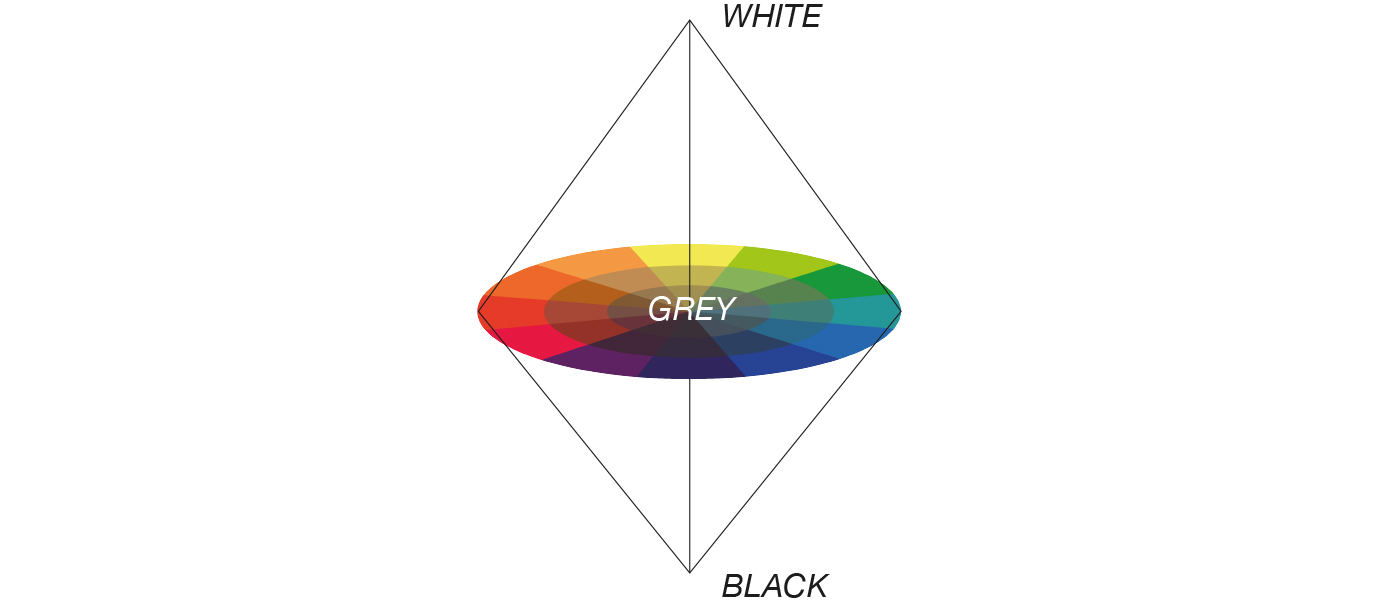Skilled makeup artists can use color theory to hide blemishes, emphasize certain facial features, make someone look younger, older or even less tired, but it's all based on knowing color theory and the subject's skintone.
But just how is one's skintone determined?
To understand this, first let's take a look at some color theory basics. Below are some important terms and concepts to subtractive color theory, aided by the color wheel, the Munsell color system chart and seen via the Adobe Photoshop color picker.


Similar to the full spectrum of visible colors, there is a subset of hues seen in skintones. This set of hues only range from red to yellow, though varied in saturation and value.
Rarely does natural skin pigmentation appear as a pure hue, or fall on the most extreme ends of value, thus the reason they're called tones.


As mentioned above, tones are hues that are saturated to some degree but have grey mixed in. Grey comes from influence of colors on the opposite side of the color wheel; In the case of skintones, cool colors.
When a hue is influenced by a color farther away on the color wheel (complimentary), the closer it gets to equal the influence, the more grey is apparent in the resulting color.
This means skintones are made up of a hue between red and yellow + a second hue influence that can push it towards a
warmer or cooler version, and also determines it's degree of saturation.
This is most prominent when looking at the extremes in undertone on the skintone spectrum: blue/purple and green.
When looking at the color picker in photoshop you'll see they aren't in the green or purple area of the hue slider, they're still in yellow and red respectively, but these have the cool color influences reaching across the middle the color wheel, where the grey and tones live.
On the color picker, that translates to leaning towards less saturation, and being more likely to sit closer to the left side (where the grayscale is) of the color picking square.
In beauty and fashion, personal color analysis pairs a set of personalized color suggestions for clothing, accessories, etc with the colors of one's eyes, hair and skin to result in flattering and complimentary combinations. Understanding one's skintone and undertone can often change the set of colors suggested dramatically.
When one understands the color of a person's skin, and employs color theory for makeup matching, the more efficient the application of makeup can be. This means using less product to result in a more natural look that is blemish free. Poor application can result in a caked on makeup texture, or someone looking sickly, pale, or having unnaturally pigmented skin.
Despite the international audience of the beauty and fashion industries, many of the rules they go by had been made with fair skin bias and eurocentric beauty standards that have yet to to fully embrace the diversity of skincolors seen globally.
Skintones outside of that realm had been neglected to be developed for with as much attention, which up until recently left people with incomplete, misinformed, and poor guidance that wasn't really made with their skin in mind, which acts as a silent form of inequality.
More recently some of the issues in the makeup and beauty realm have begun to be addressed and thought through, such as
lack of dark foundation colors and overlooked demographics
, to
addressing misdiagnosis of asian undertones
where the usual methods of testing against vein color doesn't always apply.
Being able to understand color theory as well as diving further into color psychology can enable you to discern the differences in the intent behind beauty standards for other ccultures who share similar skintones, and
being able to determine your own skintone and undertone will help you more fully take advantage of what the realm of beauty and fashion has to offer, remove some of the hurdles presented to have equal access, and enable a more inclusive industry.